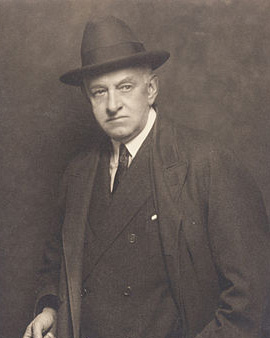Picturesque landscapes that seem almost dreamy are among the most famous works of the American artist Willard Leroy Metcalf. He gained his first artistic experience during his training in woodblock printmaking. He then acquired valuable knowledge during his training at George Loring Brown, who was a well-known landscape painter. Metcalf also attended the Lowell Institute. He spent the summer months in the White Mountains, a picturesque mountain range in New Hampshire. There he made his first landscape studies. His artistic talent did not remain undiscovered. Willard Leroy Metcalf was among the first scholarship holders to study painting at the School of the Museum of fine Arts in Boston.
Metcalf was very close to nature, which is also evident in his works. In 1881 he took part in an expedition that explored the southwest of the USA. His impressions of the expedition were printed in numerous magazines. Especially his drawings of the Indian tribe of the Zuñi found great interest. Metcalf was financially very successful with his illustrations. In 1883 he was able to realize a dream: The artist traveled to France. During this time he took lessons at the popular Académie Julian and he intensively studied the art movements in 19th century France. Impressionism had a lasting influence on Metcalf's own works. In 1887 Willard Leroy Metcalf went on an artist's journey to Morocco. He searched for new inspirations, which he found in the typical street and market scenes. In 1888 he returned to America and in 1891 he moved from Boston to New York. At this time he earned his money with illustrations, the sale of portraits and painting lessons. In 1896 came the breakthrough with his landscape paintings. He received the highly regarded Webb Prize of the Society of American Artists. One year later Metcalf realized another project which was very close to his heart. He founded his own artist community called "Ten American Painters".
In the years that followed, the American turned again more strongly to Impressionism. He described this decision as his own rebirth. He left New York and spent time in the artists' colony Cornish Art. In 1923 one of his paintings fetched a price of 13,000 US dollars. This was considered a record price for the work of a living artist at the time. Privately, things were not always going well for the artist. After only four years his marriage to his first wife, the stage artist Marguerite Beaufort Hailé, ended. Some time later he married Henrietta Alice McCrea. After the birth of their children they got divorced in 1920. Metcalf wasn't very active artistically at this time and turned to the alcohol. After some time he recovered and completed further works of art. Willard Leroy Metcalf died in 1925 at the age of 66 in New York from a heart attack. His works are exhibited in numerous large American museums.
×





.jpg)
.jpg)
.jpg)
.jpg)
.jpg)
.jpg)
.jpg)
.jpg)
.jpg)
.jpg)
 1911 - (MeisterDrucke-576979).jpg)
 1911 - (MeisterDrucke-576979).jpg)
.jpg)
.jpg)
.jpg)
.jpg)
.jpg)
.jpg)
.jpg)
.jpg)
.jpg)
.jpg)
.jpg)
.jpg)
.jpg)
.jpg)
.jpg)
.jpg)
 - (MeisterDrucke-591822).jpg)
 - (MeisterDrucke-591822).jpg)
.jpg)
.jpg)
.jpg)
.jpg)
.jpg)
.jpg)
.jpg)
.jpg)
_-_(MeisterDrucke-1455053).jpg)
_-_(MeisterDrucke-1455053).jpg)
.jpg)
.jpg)
.jpg)
.jpg)
.jpg)
.jpg)
.jpg)
.jpg)
.jpg)
.jpg)
.jpg)
.jpg)
.jpg)
.jpg)
.jpg)
.jpg)
.jpg)
.jpg)
.jpg)
.jpg)
.jpg)
.jpg)
.jpg)
.jpg)
.jpg)
.jpg)
.jpg)
.jpg)
.jpg)
.jpg)
.jpg)
.jpg)
.jpg)
.jpg)
.jpg)
.jpg)
.jpg)
.jpg)
.jpg)
.jpg)
.jpg)
.jpg)
.jpg)
.jpg)
.jpg)
.jpg)
_-_(MeisterDrucke-1542719).jpg)
_-_(MeisterDrucke-1542719).jpg)
_-_(MeisterDrucke-1529008).jpg)
_-_(MeisterDrucke-1529008).jpg)
.jpg)
.jpg)
.jpg)
.jpg)
.jpg)
.jpg)
.jpg)
.jpg)
.jpg)
.jpg)
_-_(MeisterDrucke-1630178).jpg)
_-_(MeisterDrucke-1630178).jpg)






